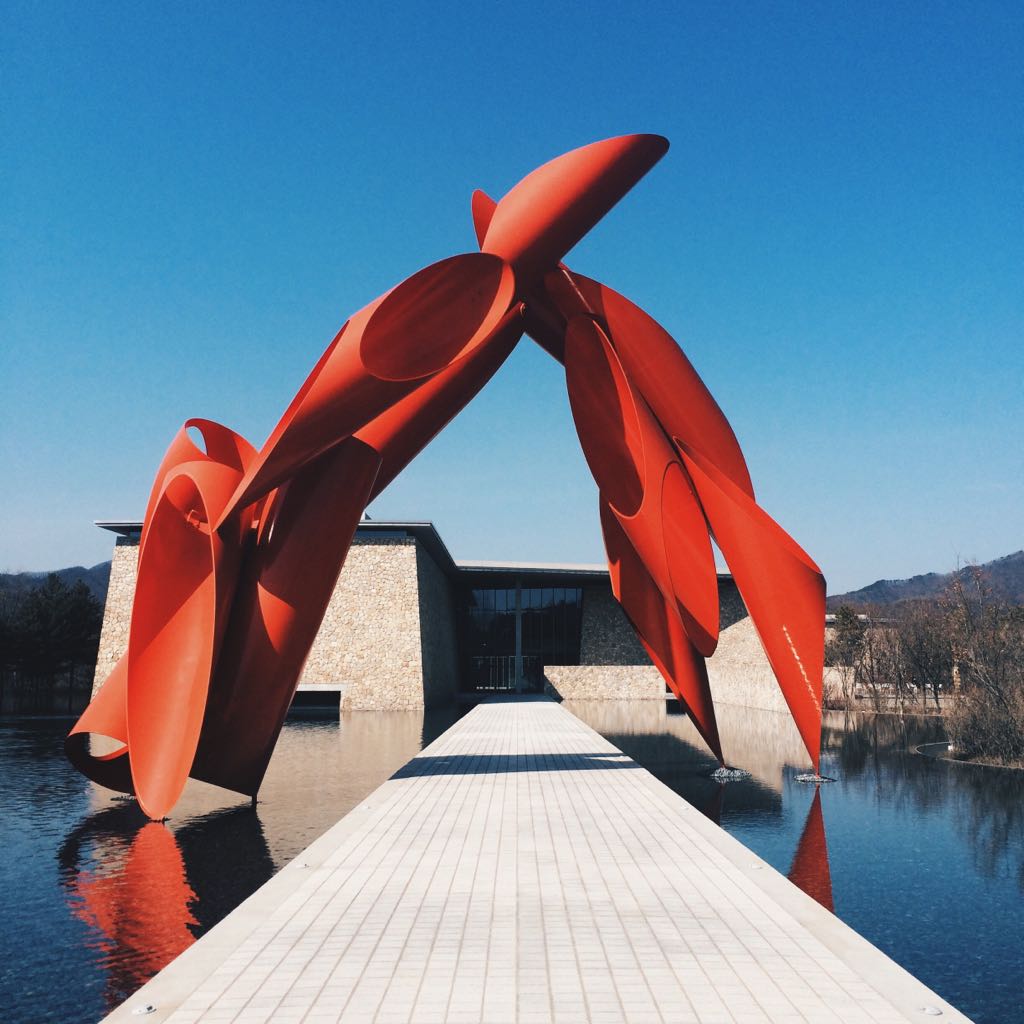A Visit to the Museum of Contemporary Art
Almost all of the museums I had visited in the downtown of Chicago were squeezed by skyscrapers and busy roads. But on the way heading to the Museum of Contemporary Art(MCA), I could see the difference from those museums. There was a park in front of the MCA which made it stay in peace.
The exterior of the MCA seemed like a cold, stern structure like its surrounding buildings. But what made it look different from those was numerous windows in the middle of its exterior. The sky reflected on its windows was overwhelming.
There were lots of current exhibitions in the MCA; Body Doubles, Richard Hunt, Faheem Majeed, Alexander Calder and Doris Salcedo.
The first floor was having Body Doubles exhibition. The exhibition was mainly telling us about two parallel ideas about the relationship between the body and identity. Next exhibition showed Richard Hunt's artworks. His sculptures were all made of metals. What I was surprised from his artworks was how he expressed the flexibility of metal. I usually had prejudice about using a metal as an art material. But his works completely broke my prejudice. Even in his drawings showed metallic texture which is smooth and sharp. The second floor was about Faheem Majeed. His artworks were mostly made of wood and this gave a folksy atmosphere.
The next floor was about Alexander Calder's artworks. This should have been the most interesting theme. But I was so disappointed with how they placed his works. In Korea, I saw lots of his works and all of them were well displaced with a suitable brightness of light. I liked how shadows were made by the movements of his works. And their shadows and highlighted pigments made me to concentrate on them even more. However, in the MCA, his works were under the same light which was not even bright and the room was not dark enough to show me their shadows.

Right next to the exhibition of Alexander Calder, there was a special exhibition by Doris Salcedo. This was the most interesting theme for me. And his work named Plegaria Muda was the most interesting artwork. It occupied the most space among all artworks, so it caught my eyes. Its label told that it was representing human coffins. But before reading an information about it, it seemed like telling that a life could exist even in a hard condition, like wars. In this section, I could feel miseries, sadness and pain from each displayed object. The additional source provided by our professor gave a deeper understanding to her works. It clearly showed that those gave the same emotional impression on me. Moreover, it gave an information about her purpose of making them and what she thought while presenting them. And I understood that she was not presenting her personal pain but the pain created by political powers. She wanted to share this emotion.
I realized that artists can represent their feeling and ideas not only with the shapes of an artwork, but also with art materials; The Body doubles used mainly photographs and videos; Richard Hunt used metals; Alexander Calder used wires and metal pieces; and Doris Salcedo used many different scales of materials. And cutaway posters and bookstores made the museum more interesting for young teenagers and kids. Overall, the MCA became an enjoyable place for the whole age groups.





